Trekking in Nepal - 1985
For my vacation this year, I took 8 days leave of absence and went to Nepal for a month to trek through the Himalayas. The trip was organized by a company named Mountain Travel which runs trips like this all over the world.
A trek is like backpacking except that there are porters or pack animals to carry the gear and a camp staff to setup tents, cook the food and other camp chores. All you have to do is carry a day pack and hike down the trail. It's possible this way to cover much more territory than if you had to do it all yourself.
The name of the trek was "22 Day Everest Base Camp" and is referred to as one of the world's classic hikes. We flew to Katmandu, Nepal and then spent 22 days hiking to Mount Everest. The trip required no special skill, just a reasonable amount of physical fitness and a willingness to spend 22 days living in tents and living out of a duffel bag. We covered over 200 miles hiking, but that only comes out to around 10 miles a day.
The following are some specific points of interest from the trip.
People
There were 11 people who signed up for the trip. One person was ill when he arrived and had to leave after the first day on the trail with double pneumonia. Of the rest, there were 4 women, there were 4 people from the west coast, 4 from the east coast, 2 from the Midwest and the ages ranged from 26 to 73. Four people had been on Mountain Travel trips before.
Weather
Generally the weather was very good. We only had 1 day when we had to hike in bad weather, but that day it rained, hailed and snowed. See Lukla for the other day when weather affected the trip. Generally the weather was clear in the mornings with overcast developing in the afternoon and usually a light rain (or snow at high elevations) around 4 p.m.
Sherpas
Sherpa is the name of an ethnic group living in the Khumbu region of Nepal and of Tibetan descent. It is also a job title. The Sherpa people are strong, hard working and laughing all the time. Our camp sherpas were dedicated to seeing that we had a successful trip. Both groups were really great.
Buddhists
Although Nepal is 50% Hindu, the region we were in was almost 100% Buddhist. We passed many Mani walls which are collections of flat stone tablets with prayers carved on them. We got to spin prayer wheels which are hollow cylinders with written prayers inside them. The cylinders are on axes and mounted vertically. When someone walks by and gives them a spin, the prayers inside are sent up to heaven. We also go to attend a ceremony at a gompa (monastery) where the monks chanted, beat on drums, blew horns and worn floppy hats (although not all at the same time).
Altitudes
The highest altitude we reached was 18,500 feet. This was the top of a ridge called Kala Patar which is the best place for close-up views of Mount Everest. We had a campsite at 17,200 feet and camped twice at 16,200. These were the highest campsites I've been at. The summit of Kilomanjaro is 19,000 feet so I have been a little higher than we reached on this trip.
Lukla
After the trek, we were to fly from the STOL (Short TakeOff and Landing) airstrip of Lukla back to Katmandu. The itinerary allows 4 days for this flight. They don't fly if there is bad weather or if the pilot has a headache or many other reasons. The day we were to fly out was just about the only morning we had rain and they didn't fly. The next day we were able to get 2 people out, the 3rd day we got 5 people out and the 4th day the last 3 of us got out. People suffer from the "Lukla Syndrome", meaning that they go crazy waiting and not knowing when they'll get out.
Drama
Our trip leader had told us that every time he's been to the high campsite (17,200), he's always found someone sick there. Our group did fine, but we found someone there who was the sickest our leader had ever seen anyone there. The fellow had both pulmonary and cerebral edema, both of which can be fatal if the person isn't evacuated to lower altitudes quickly. They're both caused by ascending to high altitude too quickly. If we hadn't been there with our trip leader, our trip doctor, our medical supplies and our sherpas, the fellow would have died within 12 hours. Since we couldn't get a helicopter or any animals to help evacuate him, our sherpas (weighing about 130 pounds) took turns carrying this 200 pound person piggyback down the trail. Eventually they found a yak that he could ride. While he recovered, he'll have to go through testing when he gets home to see if there was any permanent brain damage.
High Points
There were 2 major high points on the trip for me. The first was seeing Everest and going to the base camp. Base camp has been a dream for many years and realizing it was quite an experience.
The other high point was visiting Kancha's house. Kancha was the Sirdar (Sherpa leader) for our trip. Going in, we had afternoon tea at his home and coming out we had dinner there and the next morning, we had a brief Buddhist ceremony where he presented us with katas, scarves which symbolize good luck and safe journey.
Where next
Who knows? I'll probably do something like this again, but right now I have no idea of where or when.
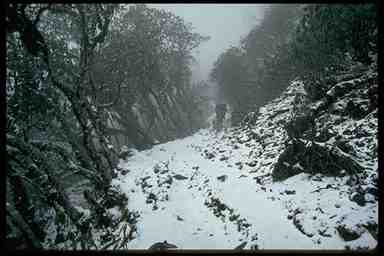
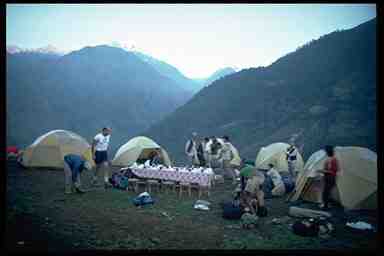
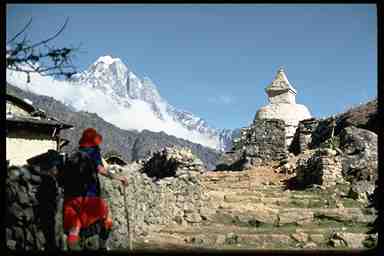
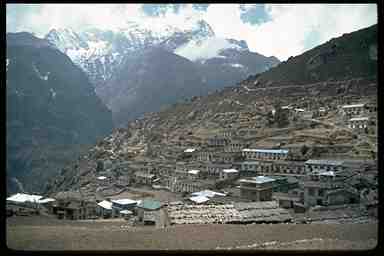
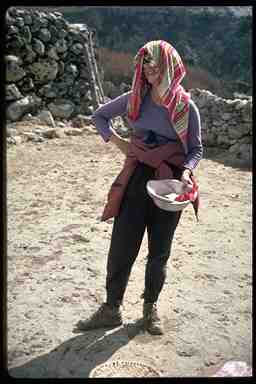



Back to Home Page